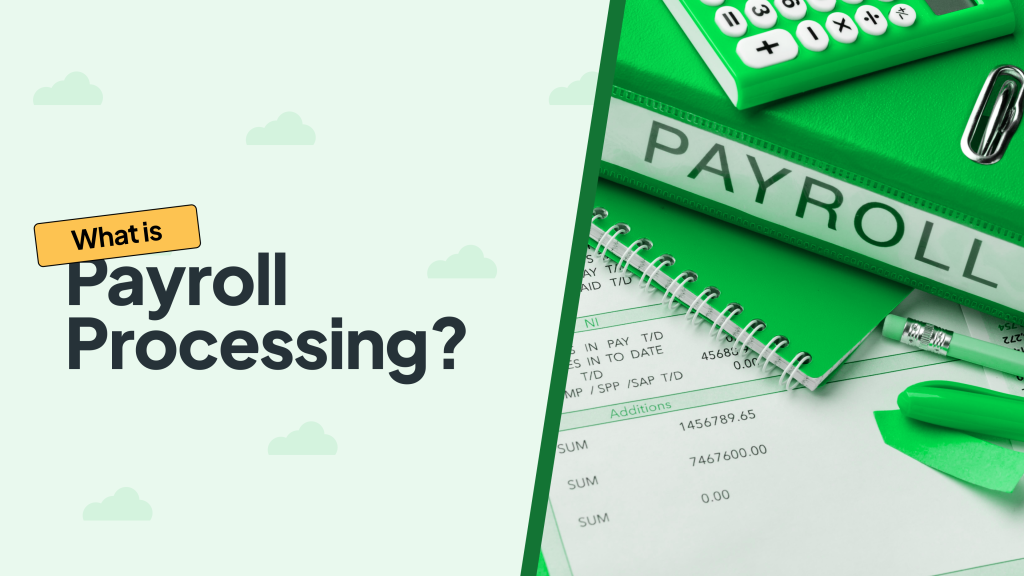
In any organization, payroll processing is vital for ensuring employees are paid correctly and on time. While it might sound simple, payroll processing involves various intricate steps, including calculating wages, withholding taxes, distributing payments, and maintaining compliance with local labor laws. A smooth payroll process is essential for employee satisfaction and legal compliance.
In this post, we’ll examine the key stages of payroll processing, highlight its benefits, and explore how automation tools like Salario can streamline the process.
Stages of Payroll Processing
Effective payroll processing is more than just cutting cheques at the end of the month. It’s a structured, multi-step operation that ensures employees receive the correct pay while keeping the company compliant with tax laws and regulations. Let’s look at the different stages involved:
1. Employee Information Collection and Setup
The first step in payroll processing is setting up employee information in the payroll system. This includes personal details such as the employee’s name, address, and bank account information for direct deposits. Additionally, companies need to collect tax information, such as Social Security Numbers or Taxpayer Identification Numbers, and details on deductions like health insurance or retirement plans.
At this stage, the company must also categorize employees as full-time, part-time, or contract workers. The type of employment determines tax withholdings, eligibility for benefits, and other compensation-related elements.
Example: Consider a growing startup. Initially, they may manage payroll using spreadsheets, but as the team expands, the complexity increases. Managing new employees and contractors and ensuring compliance with tax laws becomes cumbersome, requiring a more automated approach to avoid errors.
2. Tracking Employee Time and Attendance

Once employees are set up in the payroll system, the next step is tracking their hours worked. This stage is critical because accurate time and attendance tracking directly affect how much each employee is paid. For hourly workers, businesses need to track their daily working hours, including overtime, whereas for salaried employees, this may be less complex.
This step often includes handling paid time off (PTO), sick leave, and other absences. Many companies use time-tracking software integrated with payroll systems to streamline this process, reducing the chances of human error.
3. Calculating Gross Pay
After gathering time and attendance data, the payroll system calculates each employee’s gross pay. This is simply the total earnings before deductions, based on the employee’s salary or hourly rate and the number of hours worked.
Gross pay remains constant for salaried employees each pay period, but overtime pay and bonuses can affect gross earnings for hourly workers. Employers sometimes must also account for additional pay such as commissions, tips, or performance-based bonuses.
4. Deductions and Tax Withholdings
Once gross pay is calculated, the next step is to subtract necessary deductions. These include mandatory withholdings such as federal, state, and local income taxes, Social Security, and Medicare taxes. Employers are required to withhold these taxes from employees’ paychecks and submit them to the government.
Additionally, voluntary deductions are subtracted. These may include contributions to retirement plans, health insurance premiums, or employee contributions to a savings plan.
Handling this stage correctly is vital, as errors in tax withholdings can lead to penalties, back payments, and potentially dissatisfied employees.
5. Net Pay Calculation and Distribution
After deductions, the remaining amount is the employee’s net pay. This is the actual take-home amount that the employee will receive after taxes and deductions.

Payroll managers then distribute the net pay to employees via direct deposit, checks, or other payment methods, depending on the company’s payroll policy. At this point, the payroll manager must ensure that the payroll system accurately reconciles the total wages paid with the deductions and withholdings.
6. Post-Payroll Activities
After distributing payroll, employers must handle post-payroll activities such as filing payroll taxes and maintaining records for future audits. Payroll taxes must be paid to the appropriate government agencies according to the deadlines set by federal, state, and local governments.
Furthermore, companies must ensure compliance with payroll record-keeping requirements, maintaining detailed reports of hours worked, gross pay, and deductions. These records are essential for audits and resolving disputes.
Advantages of Efficient Payroll Processing
Payroll processing might seem like a back-office function, but it offers many advantages for businesses when done efficiently.
1. Employee Satisfaction
A seamless payroll process ensures employees are paid accurately and on time, which is crucial for maintaining high morale and trust. Late or incorrect payments can erode trust and lead to employee dissatisfaction, affecting overall productivity. An efficient payroll system helps avoid these issues, ensuring that employees remain focused on their work rather than worrying about their compensation.
Real-World Example: Imagine a small firm that manually processed payroll. A mistake led to a shortfall in one employee’s paycheck, which caused frustration and required hours of manual work to correct. By adopting an automated system like Salario, the company could avoid these errors, saving time and maintaining employee satisfaction.
2. Legal Compliance
Payroll processing involves complying with various tax and labor laws. Missing tax deadlines or withholding the wrong amount of taxes can lead to hefty fines and legal complications. Efficient payroll systems ensure that companies stay compliant by automatically calculating and withholding the correct amounts.
Compliance doesn’t stop at taxes; payroll processing must also account for changes in labor laws regarding overtime pay, paid leave, and employee classification. Automated systems are regularly updated to reflect legal changes, ensuring your business remains compliant with the law.
3. Data Security

Payroll data is sensitive and must be handled with care. Ensuring the security of employee information, such as Social Security numbers and bank account details, is crucial. Modern payroll systems are designed with data encryption and other security features that help protect this information from unauthorized access or breaches.
Companies using manual payroll processing or outdated systems are at greater risk of data breaches, which can lead to legal penalties and loss of employee trust.
4. Cost and Time Efficiency
A streamlined payroll process saves businesses time and money. Manual payroll processing requires extensive time to calculate hours worked, taxes, and deductions—time that could be spent on more strategic business activities. Automated payroll solutions like Salario reduce the need for manual input, freeing up HR departments to focus on other tasks.
Additionally, automation minimizes the risk of costly errors, such as overpayment or underpayment, that may result in time-consuming corrections later.
Why Automating Payroll is Key
Manual payroll processing can quickly become inefficient as a company grows. Automation offers a way to manage payroll processes accurately, securely, and efficiently. Systems like Salario allow companies to:
- Integrate payroll with time tracking, accounting, and benefits management systems
- Automatically calculate wages, deductions, and taxes
- Ensure legal compliance with the latest tax and labor laws
- Generate detailed payroll reports for audits and reviews
- Provide secure access to payroll data for both employers and employees
As your company scales, investing in automated payroll solutions becomes essential for handling the increased complexity.
Final Thoughts
Payroll processing is a critical function for every business, regardless of size. From calculating gross pay to handling tax withholdings and post-payroll activities, this multi-step process ensures that employees are compensated correctly and that the company stays compliant with legal regulations.
Efficient payroll processing offers numerous benefits, including increased employee satisfaction, legal compliance, and cost efficiency. By automating payroll tasks, businesses can save valuable time and resources while reducing the risk of errors.
For businesses looking to simplify payroll, Salario offers a comprehensive solution designed to streamline payroll processing from start to finish. With Salario, you can focus on growing your business while leaving payroll headaches behind. Visit Salario to learn more.

Deductions and withholdings were a pain before getting our current software. Now we can utilize up to 40 user defined fields that we set up for deductions or additions like 401Ks or health insurance.